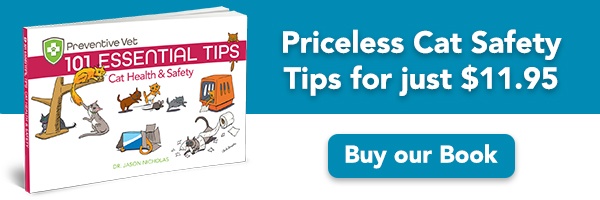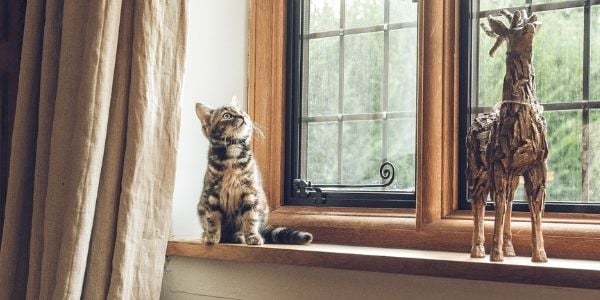 Bringing a new cat into your home is an exciting time, but in between all the fun and excitement, it’s important to remember a few practicalities.
Bringing a new cat into your home is an exciting time, but in between all the fun and excitement, it’s important to remember a few practicalities.
Follow the 10 simple pet-proofing steps outlined in this article to help ensure that your kitty stays safe and healthy for many years to come.
Top 10 easy and effective pet-proofing tips for kittens and cats
1. Cover and Contain the Cans
From food scraps to hygiene products, the trash cans around your home often contain all manner of enticing hazards for cats.Prevent accidental poisonings and digestive upsets or obstructions by preventing your cat’s access.
Prevent pet suffocation, too! Did you know that dogs, cats, and wildlife are dying tragically after suffocating in chip and snack bags? It happens more often than you think!
Please first dispose of snack bags and containers properly and only use sturdy, covered trash containers in all rooms of your home (don’t forget the bathrooms, laundry room, and bedrooms).
When possible, take the additional step of keeping these trash receptacles behind securely closed closet or cabinet doors.
2. Protect your Surge Protectors and Electric Cords
“Shocking” may be a literal result for the cat unfortunate enough to chew on a plugged-in electric cord or power cable.Not only can the resulting shock cause significant burns in the mouth, but it can also lead to seizures and a debilitating (potentially deadly) build-up of fluid within your cat’s lungs.
Use sturdy cord covers or deterrent sprays if you cannot keep the cords completely out of your cat’s reach.
3. Put Bags Up and Away
Before you even bring your new cat home it’s important that you and all the other members of your household get in the habit of safely hanging your bags.
Purses, backpacks, diaper bags, satchels, and all others belong on sturdy coat hooks, coat racks, or behind closet doors.
Poisoning is one of the most common pet emergencies. Unintentional access to bags is one of the most common scenarios leading to these sad cases.
Floors, couches, and even the backs of chairs aren’t nearly safe enough when it comes to the health of your cat.
Remember, cats love to explore and find fun, dark, covered places to hide, and bags certainly offer that!
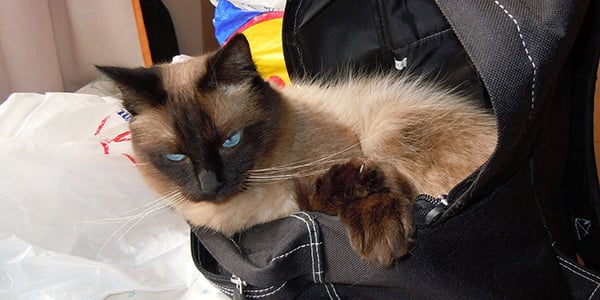
Take some time before Fluffy joins the family to install sturdy coat hooks and clean out some space in the coat closet. Don’t let family members off the hook – ask everyone to get in the habit of hanging their bags.
4. Safely Store and Dispense All Medications and Supplements
Take a moment to evaluate the medications and supplements you’ve got throughout your home. Don’t forget any medications and supplements for your pets!
Check the kitchen, bathroom, and even your nightstand. Are vials and bottles out on countertops and tabletops? Or are they all safely behind elevated and secured cabinet doors?
If it’s the former, you should take a few minutes to make it the latter. Human medications are the most common source of poisoning for pets every year.
Simple steps like this are imperative to protect your cat. Other simple and effective steps include never storing human and pet medications together, keeping all medications and supplements in their original containers, and always dispensing pills and liquids over a sink, bowl, or other container in case of spills.
5. Examine Your Flora with an Eye to Your Fauna
Sadly, there are quite a few plants and flowers that can cause problems for your cat should he decide to nibble. The problems can range from mild skin irritation or digestive upset all the way to organ failure and death.
Be careful what plants you bring into your home and what you plant in your yard. Always check bouquets for toxic flowers (especially lilies) before bringing them into your home. Even grooming a little pollen off of themselves can cause devastation.
Some of the most dangerous flowers and plants for cats include lilies, Sago palms (and other cycads), Azaleas, Castor Beans, and Cyclamen. However, this isn’t an exhaustive list (in fact, it barely even scratches the surface).
Fortunately, the wonderful folks at ASPCA Animal Poison Control have an exhaustive (and searchable) list of toxic and non-toxic plants and flowers that all pet owners should bookmark.
Check out our list of safe indoor plants for cats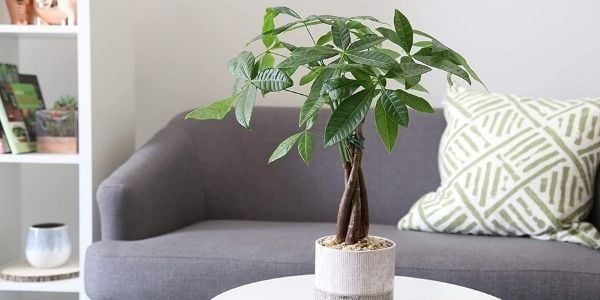
6. Provide Personal Space for Your Cat
Set up and provide your cat with a “safe space” he can go to anytime he needs to escape whatever is going on in your home.Whether the anxiety-inducing event is a holiday party, a thunderstorm, or even the first steps of a toddler, having such a space can save your cat a lot of emotional distress and physical pain. Plus, this can potentially save your party guests’ coats from a “showering” or your toddler from a nasty scratch or bite.
Make the space comfortable and easily accessible for your cat, and then make sure that all family members (especially young children) along with all houseguests know to leave the cat alone when he’s there.
*An important aside – if your cat is constantly hiding, this could indicate a medical problem, such as tooth pain, a urinary obstruction, or something else. This is especially likely if there are also changes in their appetite, litter box trips, or overall energy level. If you notice this, call your vet.
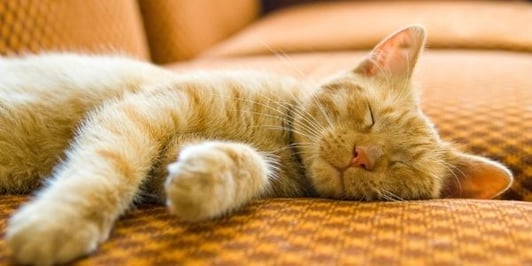
7. Put Away Poisons
From rat and mouse poisons to common gardening, cleaning, and automotive chemicals, you probably own some dangerous products. The bottles under your kitchen sink, or in your laundry room, basement or garage can pose a significant hazard to your cat’s health and safety.
Be sure these products are all safely stored behind cabinet doors — high shelves may not be enough given a cat’s jumping ability.
Always clean up all spills promptly and appropriately (especially when antifreeze is involved).
Regarding those pesky rodents – snap traps are far safer for your cat than poison baits, and can be equally as effective for pest control – especially since your cat is likely to be helping out the cause anyway. And don't forget slug & snail bait, too.
8. Remember That Cats Climb — and Jump!
Each year, countless kittens sustain injuries and even die after falling or jumping off beds, bookcases, or even from their people’s arms or shoulders. And they also suffer crushing injuries when shelves or other pieces of unstable furniture fall down on them when jumped upon.
Appreciate the fragility of kitty bones and skulls and their developing dexterity by restricting your kitten’s access to tall furniture until he’s more fully grown and coordinated.
As an important added precaution, install furniture straps on tall bookcases and flat-screen televisions. Also, insist that anytime a small child holds the family kitten, they’re doing so while sitting safely and calmly on the ground. No child wants a memory of causing harm to the family kitten.
9. Don’t Underestimate the Importance of the Litter Boxes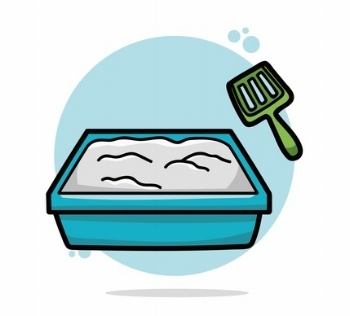
Not only can a less-than-ideal litter box set-up lead to unsightly “deposits” on your carpets and laundry, but it can also increase your cat’s risk for certain health problems and emergencies.The two most notable of these are constipation and urinary obstruction. The best practices are to scoop and clean their boxes daily, have one more litter box than the number of cats you have, and to locate the boxes in different areas and levels of the home.
Extremely important, make sure you are paying attention to what your cat is leaving in the box. Changes in bathroom habits can be some of the earliest indications of certain medical problems.
Check out this article to learn more about your cat’s litter boxes.10. Watch Those Windows
There’s a very common cat emergency that happens all too often in the warmer months of the year when people start opening the windows of their home — it’s called High Rise Syndrome.Though we often think of cats having impeccable balance and nine lives, neither is completely true. Many cats fall out of open windows as they’re lounging in the sun on the sill or as they’re swatting at passing bugs and birds. Some cats just misjudge their jump to the sill.
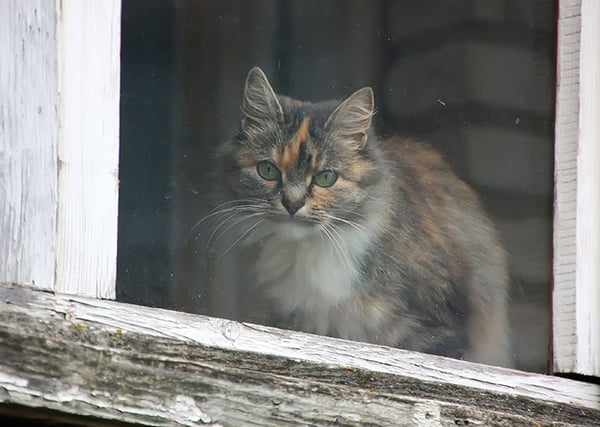
However they happen, such falls can result in painful and devastating circumstances. And don’t let the name of this condition fool you, it’s not just skyscrapers where this is a problem. Devastating falls happen regularly in two and three-story homes as well.
In fact, there is a surprising relationship between the height of the fall and the severity of the injuries sustained. Make sure to install sturdy window screens and learn more about this preventable emergency here.
If you already have young (human) children, you may already have made a good amount of pet-proofing progress. But even if so, there are important differences in home safety needs between young children and young (or even older) cats.
After all, we don’t expect too many infants or toddlers to chew on electric cords or grab the dental floss out of the bathroom wastebasket, but give a kitten the chance to do either and, more often than not, he’ll happily do so.
So invest a bit of time now to evaluate (or reevaluate) the safety of your cat’s environment, and you can focus more on the fun and excitement in the days, months, and years to come.




